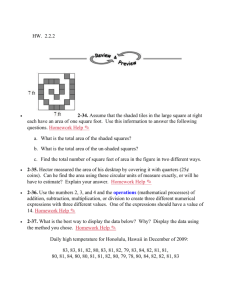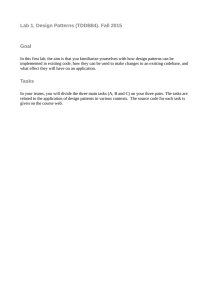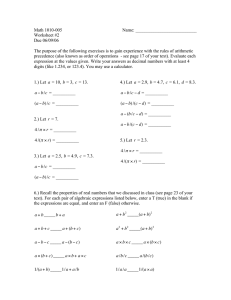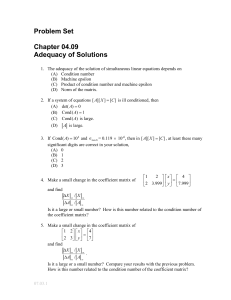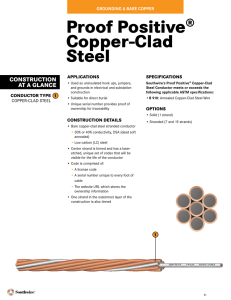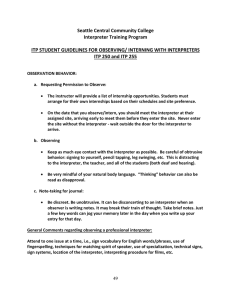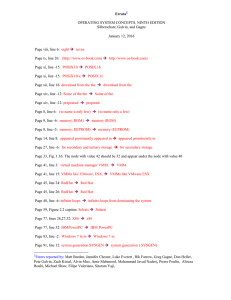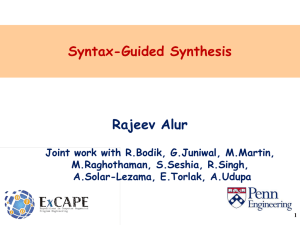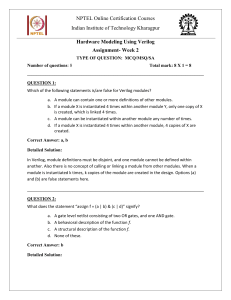Scheme Programming Exercises: Arithmetic, Conditionals, Procedures
advertisement
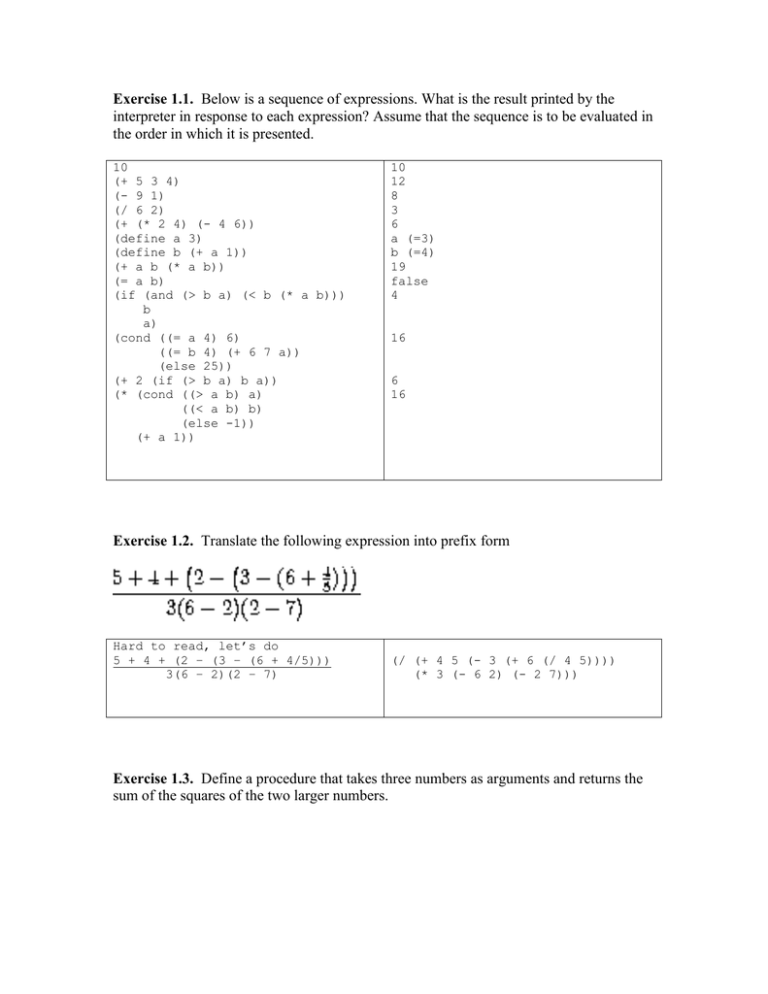
Exercise 1.1. Below is a sequence of expressions. What is the result printed by the interpreter in response to each expression? Assume that the sequence is to be evaluated in the order in which it is presented. 10 (+ 5 3 4) (- 9 1) (/ 6 2) (+ (* 2 4) (- 4 6)) (define a 3) (define b (+ a 1)) (+ a b (* a b)) (= a b) (if (and (> b a) (< b (* a b))) b a) (cond ((= a 4) 6) ((= b 4) (+ 6 7 a)) (else 25)) (+ 2 (if (> b a) b a)) (* (cond ((> a b) a) ((< a b) b) (else -1)) (+ a 1)) 10 12 8 3 6 a (=3) b (=4) 19 false 4 16 6 16 Exercise 1.2. Translate the following expression into prefix form Hard to read, let’s do 5 + 4 + (2 – (3 – (6 + 4/5))) 3(6 – 2)(2 – 7) (/ (+ 4 5 (- 3 (+ 6 (/ 4 5)))) (* 3 (- 6 2) (- 2 7))) Exercise 1.3. Define a procedure that takes three numbers as arguments and returns the sum of the squares of the two larger numbers. Exercise 1.4. Observe that our model of evaluation allows for combinations whose operators are compound expressions. Use this observation to describe the behavior of the following procedure: (define (a-plus-abs-b a b) ((if (> b 0) + -) a b)) Exercise 1.5. Ben Bitdiddle has invented a test to determine whether the interpreter he is faced with is using applicative-order evaluation or normal-order evaluation. He defines the following two procedures: (define (p) (p)) (define (test x y) (if (= x 0) 0 y)) Then he evaluates the expression (test 0 (p))

